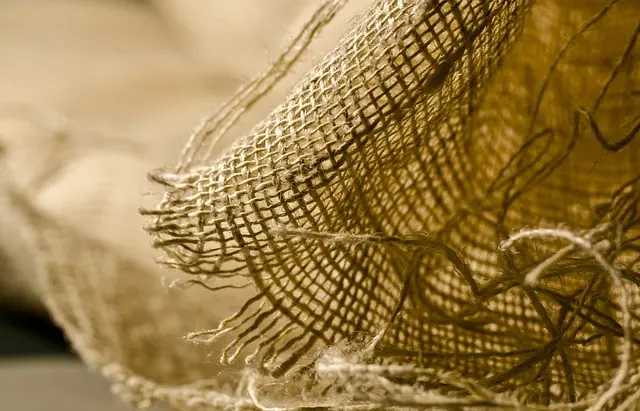Red Bali and Maeng Da are two powerful kratom strains known for their analgesic properties, particularly effective for joint pain relief. Red Bali Kratom is celebrated for its balanced pain-relieving and mood-enhancing effects with minimal sedation, making it a preferred choice for those seeking chronic pain management without heavy sedation. Sourced from the lush fields of Bali, Indonesia, it's recognizable by its dark red veins, signaling a rich alkaloid content. Users often report its effectiveness in managing chronic joint discomfort due to its calming nature. On the other hand, Maeng Da Kratom, also known as 'Pimp Leaf,' is renowned for its intense analgesic effects, enhanced by a specialized drying process that heightens its alkaloid content. This strain offers robust pain relief with less cognitive impairment, which can be particularly beneficial for those requiring immediate and sustained relief from both acute and chronic joint pains. The choice between Red Bali and Maeng Da should be made based on individual preferences and the nature of the joint pain condition, as user experiences with these strains can vary. Both have their unique advantages in the realm of natural pain management, but it's essential to approach their use with caution and consult healthcare professionals, given the ongoing investigations into kratom's efficacy and safety for joint pain relief.
explore the potential of Red Bali Kratom and Maeng Da in providing joint pain relief, this article delves into the comparative effects of these two potent strains of Mitragyna Speciosa. By dissecting the alkaloid profiles that contribute to their analgesic properties—particularly the influential 7-Hydroxymitragynine and Mitragynine—we aim to clarify the efficacy and user experiences associated with each. A balanced examination of user reports will shed light on the nuances between Red Bali Kratom and Maeng Da, guiding readers through an informed understanding of their options for joint pain management.
- Exploring Red Bali Kratom and Maeng Da for Effective Joint Pain Relief: A Comparative Analysis
- Understanding the Mitragyna Speciosa Alkaloids: The Role of 7-Hydroxymitragynine and Mitragynine in Pain Management
- Balancing Efficacy and Experience: User Reports on Red Bali Kratom vs Maeng Da for Joint Pain Relief
Exploring Red Bali Kratom and Maeng Da for Effective Joint Pain Relief: A Comparative Analysis

Red Bali Kratom and Maeng Da are two distinct strains from the kratom species, widely recognized for their potential to alleviate joint pain. Both strains possess unique alkaloid profiles that contribute to their analgesic properties. Red Bali Kratom is celebrated for its balanced effects, offering a blend of pain relief and mood enhancement without overpowering stimulation. It is derived from the mature leaves of the kratom plant grown primarily in the Indonesian region of Bali and is known for its deep red veins, which hint at its high alkaloid content. Users often report that Red Bali Kratom helps manage chronic joint pain effectively due to its sedating and soothing nature, making it ideal for those seeking relief from discomfort without significant side effects.
Maeng Da Kratom, on the other hand, is a potent strain with a reputation for its invigorating effects. Originating from Thailand, ‘Maeng Da’ translates to ‘Pimp Leaf’, reflecting its robust nature. This strain undergoes a unique drying process that enhances its alkaloid concentration, contributing to its stronger analgesic qualities. Maeng Da is often favored by individuals who require more potent pain relief while maintaining cognitive clarity. It is particularly adept at addressing sharp and dull joint pains, offering both immediate and sustained relief. The comparative analysis of Red Bali Kratom versus Maeng Da reveals that while both strains can be highly effective for joint pain relief, the choice between them may depend on the user’s specific needs, tolerance levels, and desired effects. Users sensitive to stimulation may prefer the more subdued experience of Red Bali, whereas those seeking a more invigorating effect with powerful analgesic properties might opt for Maeng Da.
Understanding the Mitragyna Speciosa Alkaloids: The Role of 7-Hydroxymitragynine and Mitragynine in Pain Management

Mitragyna speciosa, commonly known as kratom, has garnered attention in various circles for its purported pain-relieving properties. The effectiveness of kratom in managing joint pain stems from its unique alkaloid profile, with two primary compounds playing pivotal roles: 7-Hydroxymitragynine (7-Hydroxy) and Mitragynine (MIT). These alkaloids are thought to interact with the opioid receptors in the brain, potentially offering pain relief that is both analgesic and anti-inflammatory. The balance of these compounds can vary between kratom strains, such as Red Bali and Maeng Da, which are often compared when discussing the efficacy of kratom for pain management. Red Bali kratom is revered for its sedative and relaxing effects, making it a popular choice among individuals seeking relief from chronic pain without the sedative side effects commonly associated with pharmaceutical opioids. On the other hand, Maeng Da, known as “Pimp Grade” in Thai, is celebrated for its potency and well-balanced alkaloid content, which can provide a more stimulating effect alongside its analgesic properties. Users often report that these strains offer relief from joint pain, with varying degrees of success based on individual sensitivity and the severity of their condition. It’s important to approach the use of kratom with caution, as its efficacy and safety profiles are still under scrutiny by regulatory bodies and medical researchers alike. Users should always consult with healthcare professionals before incorporating kratom into their pain management regimen.
Balancing Efficacy and Experience: User Reports on Red Bali Kratom vs Maeng Da for Joint Pain Relief

Users exploring natural remedies for joint pain relief often compare Red Bali Kratom and Maeng Da Kratom, two potent strains with distinct effects. Red Bali Kratom is renowned for its analgesic properties, providing a balancing act between pain relief and relaxation. Many users report that Red Bali offers a soothing sensation that targets joint discomfort without overpowering sedation, making it a favorite for those seeking relief during active or less strenuous days. The strain’s ability to alleviate inflammation and chronic aches is often highlighted in user reviews, with its painkilling efficacy being a primary reason for its popularity among joint pain sufferers.
In contrast, Maeng Da Kratom is celebrated for its invigorating yet effective analgesic effects. This strain is known for its fine balance that allows users to maintain mental clarity while experiencing significant pain relief. Users describe Maeng Da as a powerful ally against joint pain, attributing its efficacy to a unique blend of mood enhancement and painkilling properties. The experience is often characterized by an uplifting energy that can accompany the analgesic benefits, which some find beneficial for daily activities or tasks that require a higher level of focus and engagement. Both strains have their advocates, and the choice between Red Bali Kratom and Maeng Da for joint pain relief largely depends on the user’s specific needs and preferences for the day. It’s essential to consider individual sensitivity and the nature of joint pain when choosing between these two potent kratom strains, as personal experiences can vary widely.
Red Bali Kratom and Maeng Da have emerged as prominent natural alternatives for joint pain relief, with a growing body of user reports attesting to their efficacy. The comparative analysis reveals that while both strains offer significant pain management benefits, individual experiences can vary, often influenced by the unique alkaloid profiles within Mitragyna Speciosa. Users who have experimented with Red Bali Kratom and Maeng Da for joint pain relief generally report positive outcomes, suggesting that these strains hold promise for those seeking alternative methods of pain alleviation. As research continues to shed light on the mechanisms behind 7-Hydroxymitragynine and Mitragynine, it’s clear that a deeper understanding of these compounds could further enhance the therapeutic potential of kratom in managing joint discomfort.






